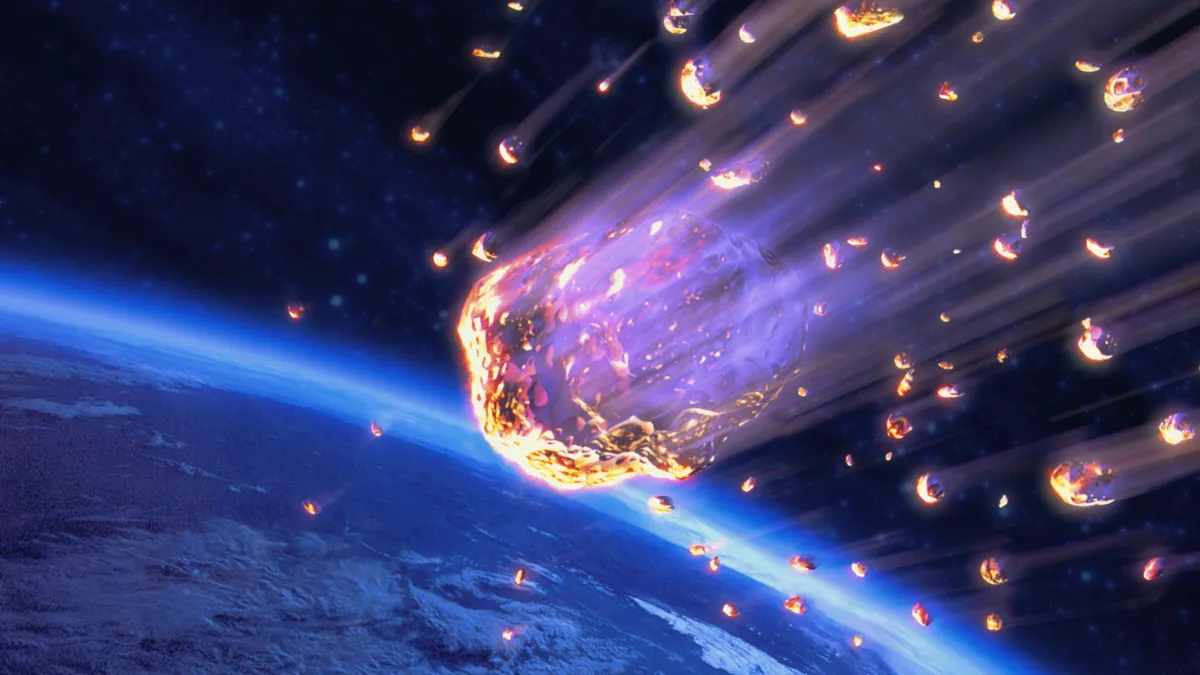
Recent simulations have uncovered alarming information about the infamous city killer asteroid, 2024 YR4. If this space rock were to collide with the moon in seven years, it could unleash a torrential shower of bullet-like debris towards Earth. This scenario poses significant risks, not just for our planet but also for the satellites orbiting it.
2024 YR4 is classified as a potentially hazardous asteroid, measuring approximately 200 feet (60 meters) across. This size is substantial enough to devastate a major urban area if it were to strike Earth directly. Initially discovered in December 2024, the asteroid captured headlines earlier this year when scientists predicted a potential collision with Earth on December 22, 2032. At one point, the odds of such an impact peaked at 3.1% in February, prompting extensive investigations by NASA.
However, subsequent analyses confirmed that the asteroid poses no threat to Earth. In April, researchers discovered that while Earth is safe, 2024 YR4 could still impact the moon. The likelihood of this lunar collision has been steadily increasing, recently rising to 4.3%. Experts anticipate a clearer understanding of these odds by 2028 when the asteroid makes its next close approach to our planet.
A study uploaded to the preprint server arXiv on June 12 details computer simulations that model the potential outcome of a lunar impact. Researchers estimate that if 2024 YR4 strikes the Earth-facing side of the moon — a scenario with a nearly 50% chance — it could eject approximately 220 million pounds (100 million kilograms) of material from the lunar surface. Of this, up to 10% of the debris could be drawn into Earth's gravity within days following the impact.
According to lead author Paul Wiegert, an expert in solar system dynamics at Western University in Ontario, Canada, this event could represent the largest impact on the moon in at least 5,000 years. The energy release from such an incident would be comparable to a significant nuclear explosion, raising concerns about its fallout.
While the new simulations indicate that a meteor shower could occur as fragments of the lunar debris burn up in Earth's atmosphere, it is crucial to mention that the chances of these fragments posing a risk to people on the surface are slim. However, the situation becomes more precarious for our space-based infrastructure. The influx of debris could increase the likelihood of satellites being struck by meteors by nearly 1,000 times.
With the number of spacecraft orbiting Earth expected to rise significantly by 2032, even small fragments traveling at high speeds could wreak havoc. A centimeter-sized rock traveling at tens of thousands of meters per second could cause catastrophic damage to satellites or human-inhabited space stations such as China's Tiangong station. Notably, the International Space Station is scheduled for decommissioning by 2030, which adds urgency to the situation.
If the odds of a lunar impact continue to rise, government agencies may consider diverting the asteroid's course to safeguard Earth's space assets. Wiegert suggests that 2024 YR4 would be an excellent candidate for testing our planetary defense capabilities. NASA successfully demonstrated its ability to redirect dangerous asteroids in 2022 by altering the trajectory of the asteroid Dimorphos via the DART probe, although 2024 YR4 is only about half the size.
As the clock ticks down to 2032, the need for proactive measures becomes increasingly critical. Waiting too long to act could lead to catastrophic consequences, as a miscalculation could inadvertently place 2024 YR4 on a collision course with Earth. The scientific community is closely monitoring this situation, and further developments are expected in the coming years.